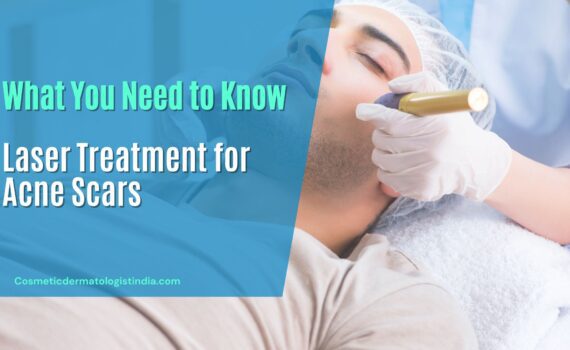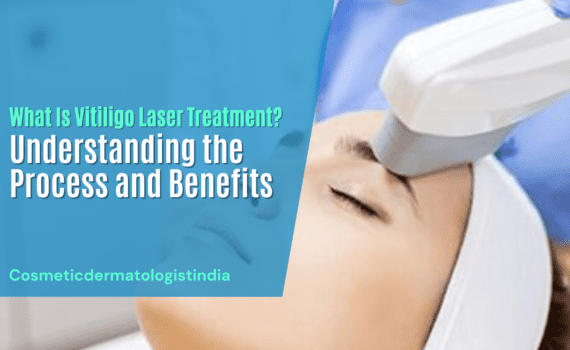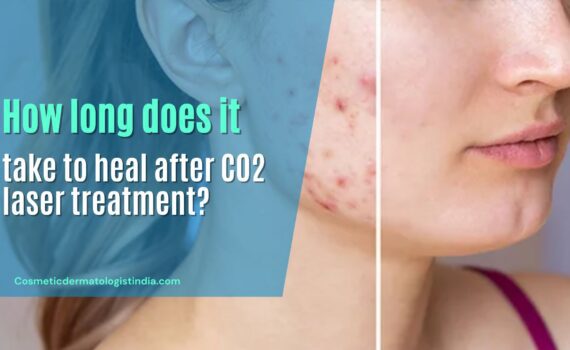
Laser Treatment for Acne Scars: What You Need to Know
Laser Treatment for Acne Scars: What You Need to Know
Approximately 95% of the people in the world today have suffered from moderate to severe acne at some point of their lives. Acne is not only uncomfortable; it also leaves behind some residual scaring which is very visible in some cases. Most of us are aware of the strict rule that touching, picking or trying burst out the pimple is a very bad idea but still sometimes we do and it can lead to scars that don’t go away with time.
Most people feel depressed and the acne scars have put a dent on your self-confidence which might become difficult to deal with. Here in comes the laser treatment for acne scars to the rescue. It is one of the most searched cosmetic treatment on the internet. The light therapy irritates the scar tissue on the top layer of the skin. This encourages the skin to start producing new and healthy skin cells that replace scar tissue and reduce the appearance of scar. The scars fade away greatly and the pain is to the minimal. Laser treatment for acne scar is the best treatment to get back the smooth and supple skin that you always wanted. Laser treatments do not work on active acne or wrinkled skin but other than that if the acne scaring making you dissatisfied with your appearance, then talk to the best dermatologist in india about laser treatments today. Although the face is the most commonly treated part, laser can also remove acne scars from back, upper torso, arms and neck.
What is acne scaring?
Acne scarring occurs when the acne does not heal properly.
There are mainly three types of acne scars
- Atrophic acne scars: these are the worst kind of scars and take a long time to treat. The look like hollow dents on the skin and are also called pitted scars. They are caused because of loss of collagen and inflammation in the active acne. These are further classified in the three categories
Ice pick scars that look small on the surface but are deep
Boxcar scars have defined edges and broad
Rolling scars cause uneven texture on the skin.
- Hypertrophic acne scars: These look like small bumps on the skin and are caused because of scar tissue build up. These are common in people with dark skin tones and are often caused because of white heads and cystic acne. They appear like keloid scars and in many cases are very prominent.
- Post-inflammation hyperpigmentation: these have the appearance of dark coloured spots on the skin. all types of acne cause an inflammatory trigger in the skin that can cause excess pigment production. Since people with dark skin have excess melanin in the skin, they are more prone to this type of scaring. People who have the tendency to pop their pimples are more prone to this pigmentation.
How does laser help in scar removal?
The best dermatologist in india Suggests some traditional methods of scar removal such as creams, exfoliation, spot treatment etc. take a long time to work and often do not give the desired results. Lasers work on all kinds of scars and heal them from within.
Given below is everything you need to know about laser treatment for your acne scars
There are different types of lasers for scar treatment
When it comes to skin treatments using lasers there is no one size that fits all. The type of scar you have will decide the type and duration of laser treatment for it. In a nutshell laser light converts into thermal energy to induce a natural wound healing in the skin. This causes new collagen formation which heals the skin and the scar. Another way that the lasers work is by using the light energy to break up the pigments and reducing the scar to a great extent.
Your dermatologist can even use a combination of different types of lasers along with topics and microneedling to improve the texture, colour of the skin and decrease the appearance of scars caused because of acne. Here is all the basics you need to know about laser options for acne scar treatment in Mumbai
- Ablative lasers for acne scars: these type of lasers use a specific wavelength of light to target the skin around the scar. As the outer layer of the skin is removed the new layer starts to grow. The new skin is smoother and without scaring. The healing time is around 2 weeks and this procedure is not suitable for severe scars. CO2 and Nd:YAG are the most common type of lasers used.
- Non ablative lasers: These work under the skin and do touch the surface. The increased collagen production triggers natural healing and cell regeneration process under the skin, thus improving the appearance of scar. This is a very suitable treatment for people with dark skin because of lower risk of hyperpigmentation. The results are not as dramatic as ablative lasers but it helps with all three i.e., atrophic and hypertrophic scarring and post-inflammatory hyperpigmentation.
- Fractional laser skin resurfacing: These are also generally a type of non-ablative laser acne treatments. Instead of a concentrated laser beam fractioned lasers hit the skin in tiny columns of light targeting only the problem area and leaving rest of the skin intact. The microthermal zones created by fractioned lasers are best for thick and bumpy scar treatment and even work for depressed scars. They also help reduce pigmentation and stimulate collagen production. The collagen helps raise the depressions in the skin and blend more evenly with surrounding skin. Fraxel and CO2 are most commonly used lasers for scar treatment. Fractioned lasers for acne scar treatment in Mumbai have shorter recovery times and less complications.
- Pulse dye laser or the intense pulsed light laser: These lasers are mainly used for treatment of post-inflammatory hyperpigmentation and/or post-inflammatory erythema on the skin. The brown or red marks on the skin are targeted by the laser (both melanin and redness) and they fade away the marks by breaking up the spots. The laser light is absorbed by haemoglobin in blood and it leads to constriction in blood vessel and hence reduced redness. There is no downtime to this procedure and it is not suitable for treatment of other types of scars.
- Picosecond Lasers for acne scars: Picosecond lasers are another great option for treatment of the hyperpigmentation caused because of acne breakouts. This is one of the most advanced form of laser for treatment of hyperpigmentation scaring. This type of laser delivers short pulses of light energy to the skin and breaks up the pigmented particles. The body absorbs the broken fragments and flushes them out of the system naturally. Since this laser does not use heat energy it is very suitable for dark skin.
Benefits for laser treatments for acne scars
- Lasers give quick results in terms of positive changes in your skin after treatment. This improvements continues for several days and months.
- They can treat large areas in one session.
- Lasers reach the deep layers of the skin and heal the deeper damage. They work in areas where other treatments have fallen short.
- The recovery is fast and less than other exfoliation methods for acne scar removal
- You will know you have won the battle against acne for good. No matter what has cause the acne and subsequent scaring, you will get the smoothest skin possible with laser acne scar treatment in Mumbai.
How long does the procedure of acne scar removal takes?
One laser appointment will last for about 60-90 minutes. You will not see the results immediately but withing 7-10 days of the session you will see visible improve in the scaring and pigmentation.
Multiple sessions are often needed to get the complete and long-term results. This is especially important in cases where non-ablative laser ae used. Though there is no downtime with laser treatment, the number of sessions needed to completely get rid of acne scaring from your skin depend on
- The severity and extent of the scars
- Selection of the type of laser needed
- Intensity of the laser (it also increases the healing time)
Ablative lasers might show the result in just one treatment but IPL lasers need 3-4 treatments spaced a month apart. Ask your dermatologist about how many sessions will be needed and about the maintenance treatment as they affect the cost of laser treatment for acne scars in Mumbai too. Your skin might look worse for a few days but as it heals you will notice a dramatic improvement.
Is laser treatment painful?
The intensity of the feel of laser on skin depends on the laser settings but it is not an intolerable pain. Your cosmetic surgeon will apply a numbing cream on the skin about 20 minutes before the procedure.
Side effect of laser treatment for acne scar
The expertise of the practitioner in working with lasers for your specific skin type is the deciding factor in reducing potential side effects after the laser treatment. expert cosmetic surgeons use different therapies to give excellent results with only few days of discomfort such as redness and temporary scabbing or discolouration. When not done by experts the list of complications from lasers range from worsening of acne, more scarring, permanent discolouration. Pulse dye laser can cause blistering and swelling whereas the fractional laser skin resurfacing can cause scaring if used too aggressively.
Every skin type needs different laser settings. The surgeon will take proper precautions so that the laser does not damage to the epidermal layer of the skin.
Skin care after laser treatment for acne scars?
Laser is a cosmetic produce and the results take some time to appear. Every skin has different healing time and recovery time. After every laser session you will have to take good care of your skin for week and months. Your skin will also need special protection from sunlight because the new skin that is formed is quite raw and sensitive. 6-8 weeks of sensitive skin care is needed to ensure that the healing is complete and skin texture and tone is even. The doctor might also give you special skin products to use to maximize the benefit of the treatment. avoid wearing makeup for a week or two after the treatment.
Here are five most important aftercare steps
- Protect your skin from sun, blue light and pollution
- Avoid using non-essential skin care products, stick to those which the doctor has recommended.
- Avoid exercise: skip all forms of exercise a day or two after the treatment. exercise can cause swelling and slow down the healing process
- Don’t scrub or exfoliate: Stick to gentle skin products
- Follow the doctor’s recommendation for aftercare
Cost of laser treatment for acne scars
The cost of laser treatment for acne scars in Mumbai can vary from few thousand rupees to up to one lakh rupees depending on the treatment. Price of the acne scar treatment using lasers are depended on the severity of the acne scaring, type and intensity of laser treatment used, the number of sessions needed and the fees of the practitioner. Since it is a cosmetic procedure, your insurance might not cover the cost of acne scar laser procedures.
Also, in laser treatment for acne scar price in Mumbai includes initial and follow up consultation costs, the hospital fees etc. Enquire in details at the clinic about the cost inclusions and exclusions.








